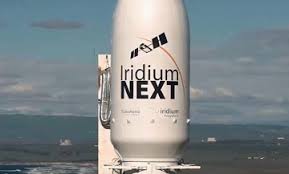Launch Date: March 30, Friday
Launch Window: 1419 GMT (10:19 a.m. EDT; 7:19 a.m. PDT)
Launch site: SLC-4E, Vandenberg Air Force Base, California
Booster Recovery: Expended - Possible water landing with focus on fairing recovery.
Booster Type: B1041 - Block 4 - Reused from Iridium 3 on 10/9/17
Orbit: LEO 9600 kg
A SpaceX Falcon 9 rocket will launch 10 satellites for the Iridium next mobile communications fleet. This will be an early morning launch if it launches on the expected date.
Iridium NEXT | Iridium Satellite Communications
Iridium-NEXT
Launch Window: 1419 GMT (10:19 a.m. EDT; 7:19 a.m. PDT)
Launch site: SLC-4E, Vandenberg Air Force Base, California
Booster Recovery: Expended - Possible water landing with focus on fairing recovery.
Booster Type: B1041 - Block 4 - Reused from Iridium 3 on 10/9/17
Orbit: LEO 9600 kg
A SpaceX Falcon 9 rocket will launch 10 satellites for the Iridium next mobile communications fleet. This will be an early morning launch if it launches on the expected date.
Iridium NEXT | Iridium Satellite Communications
Iridium-NEXT
Last edited by a moderator:



